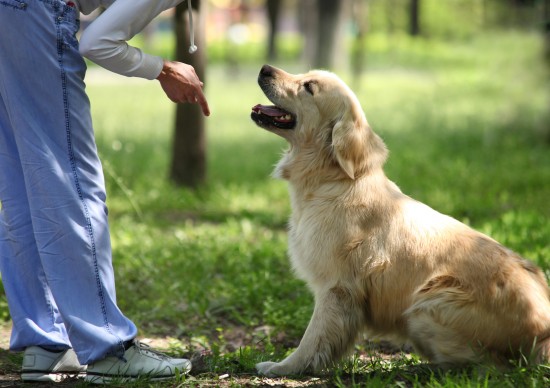Its fairly safe to assume that we have all seen the flyers or posters about a lost pet at one time or another. Behind each of these posters is a sad story; a little boy hoping somebody finds his puppy or an elderly person longing for the company of their missing cat. Unfortunately, the odds are stacked against these lost pets ever finding their way home. Based on statistics from the American Humane Association about 17% of lost dogs and only 2% of lost cats are reunited with their owners. Close to 10 million pets are euthanized each year because their owners cant be located. However, in the event your pet gets lost you can easily improve the chances of their retuning home safe and sound with some simple steps to help identify them.
The most common and easiest way to identify your pet is with a collar and nametag. Not only do nametags provide your contact information, the presence of a collar and tag may help to indicate that your pet is not simply a stray and help to illicit action on the part of people who see your pet. Since tags can fade, rust, or become damaged it is a good idea to check them periodically to make sure they are readable. If the tag is not easily read or if your contact information has changed replace them immediately. The small cost of a new tag is well worth avoiding the heartache of a lost pet.
While nametags and collars serve a vital role in identifying your pet tags can be lost and collars can slip off. A secondary and secure form of identification is the Microchip. When Microchipping your pet a veterinarian injects a computer chip about the size of a grain of rice just under the skin between your pets shoulder blades. Each chip has a unique number that is then entered into an international database such as the Central Animal Registry or PETtrac. Any animal hospital, veterinarian, animal shelter or humane society can read the I.D. number on the chip with a scanner. The number is then searched for in the database and your contact information retrieved. The microchip cant be lost or destroyed and will last for your pets entire life but it is important for you as the pet owner to keep your contact information up to date.
Even though Microchip pet identification has been safely used for several years now there are still misconceptions regarding its use. Because of this many veterinarians and humane societies have ongoing programs in an effort to educate pet owners about the value of having their pets microchipped. Here, we will address some of the misconceptions and misinformation concerning microchip identification.
Some pet owners believe that the procedure for implanting the chip is extremely expensive. While there is no absolute set price to have a microchip implanted it usually costs between $25 and $50 dollars. Often times veterinarians will offer the procedure at a discount if you have it done at the same time as another service such as annual vaccinations or spaying or neutering. This is a one-time procedure; the chip does not have a battery or other type of power source to wear out and no moving parts. The chip draws a small amount of power from the scanner when it is passed over allowing it to transmit the I.D. number. There is no monthly or annual service fee, the chip is maintenance free, and it never needs replacing. There may be a small fee for entering your contact information into the database or for changing your contact information at a later date should the need arise.
Many people are concerned that implanting the chip will be painful for their pet. The procedure to implant the microchip is not much different from your pet receiving their vaccinations. The identification chip is injected just under the loose skin between your pets shoulder blades. This leads us to another common question, and that is whether or not it is safe your pet to have a foreign object in their body. Of course there is some risk with any foreign material being in the body but these are very minimal in comparison to the risk of your pet becoming lost and not finding their way home. The microchips are comprised of an inert and biocompatible material so they will not cause an allergic reaction in your pet. While the earlier versions of the identification chips would occasionally migrate from the point they were originally implanted the newer types have been designed to prevent that from happening. This means that the chip wont move all around your pets body or come near any vital organs or nerve tissue. Your veterinarian will take the time to explain all of the risks before the procedure and will most likely recommend that you keep your pet as calm and quiet as possible for the first 24 hours after the injection to allow the implantation to heal securely.
Another common belief is that it is impossible for every microchip to have a unique number. With todays technology it is possible for these tiny microchips to hold incredible amounts of information and can produce up to 275 billion different I.D. numbers. Moreover, each chip manufacturer add product and manufacturer codes to the microchips they produce creating even more possible number combinations assuring that every pet who has a microchip implanted has their own unique number. In fact these numbers are so exclusive that both the American and Canadian Kennel Clubs recognize microchip identification as absolute proof of a dogs identity.
Some people may say that all of the aforementioned attributes of microchip identification are all well and good but of little consequence since many shelters or veterinarians dont have microchip scanners. While it is a fact that in order for the microchip to help identify your pet it needs to be scanned the truth is that there are very few shelters or veterinarians who do not have access to a microchip reader. There was a time that each brand of microchip could only be read by its own brand of scanner. However, recently the primary chip manufacturers have begun to offer a universal reader to shelters, humane societies and veterinarians for free or for a very nominal fee. This means that no matter which company manufactured your pets I.D. chip it can be easily scanned with a universal reader.
While Microchipping is very safe and effective it is no guarantee that your lost pet will be found and returned to you. It is very important that you have more than one type of identification. If for example, your pet were turned over to a shelter that did not have a chip scanner, a collar and nametag would save the day. There are also tags available that indicate that your pet does have a microchip identification thereby allowing the shelter to contact a local veterinarian or other organization that may have a scanner. A nametag will also allow for the possibility of someone finding your pet and contacting you directly. Some pet owners also opt for a small identification tattoo on the ear. If one form of I.D. fails, having secondary identification greatly increases the chances of your pet coming home to their loving family where they belong.

 The Benefits Of Feeding Apple Cider Vinegar To Chickens
The Benefits Of Feeding Apple Cider Vinegar To Chickens
 Demystifying Equine Terms And Phrases
Demystifying Equine Terms And Phrases
 Leonberger Dog Health And Longevity
Leonberger Dog Health And Longevity
 Three Great Dog Breeds That Hail From Australia, Plus One Wild Card!
Three Great Dog Breeds That Hail From Australia, Plus One Wild Card!
 5 Brilliant Places To Spend A Weekend Away With Your Dog
5 Brilliant Places To Spend A Weekend Away With Your Dog
 How To Decide Upon A Puppy Food For Large And Giant Breeds Of Dog
How To Decide Upon A Puppy Food For Large And Giant Breeds Of Dog
 3 Rare French Dog Breeds With Ticked And Spotted Coats
3 Rare French Do
3 Rare French Dog Breeds With Ticked And Spotted Coats
3 Rare French Do
 7 Cat Breeds That Boast Dog-like Personalities
7 Cat Breeds That
7 Cat Breeds That Boast Dog-like Personalities
7 Cat Breeds That
 Positive And Negative Reinforcement Dog Training
Positive And Nega
Positive And Negative Reinforcement Dog Training
Positive And Nega
 Probiotics For Dogs
Probiotics For Do
Probiotics For Dogs
Probiotics For Do
 10 Things You Should Know Before Adopting A Degu
10 Things You Sho
10 Things You Should Know Before Adopting A Degu
10 Things You Sho